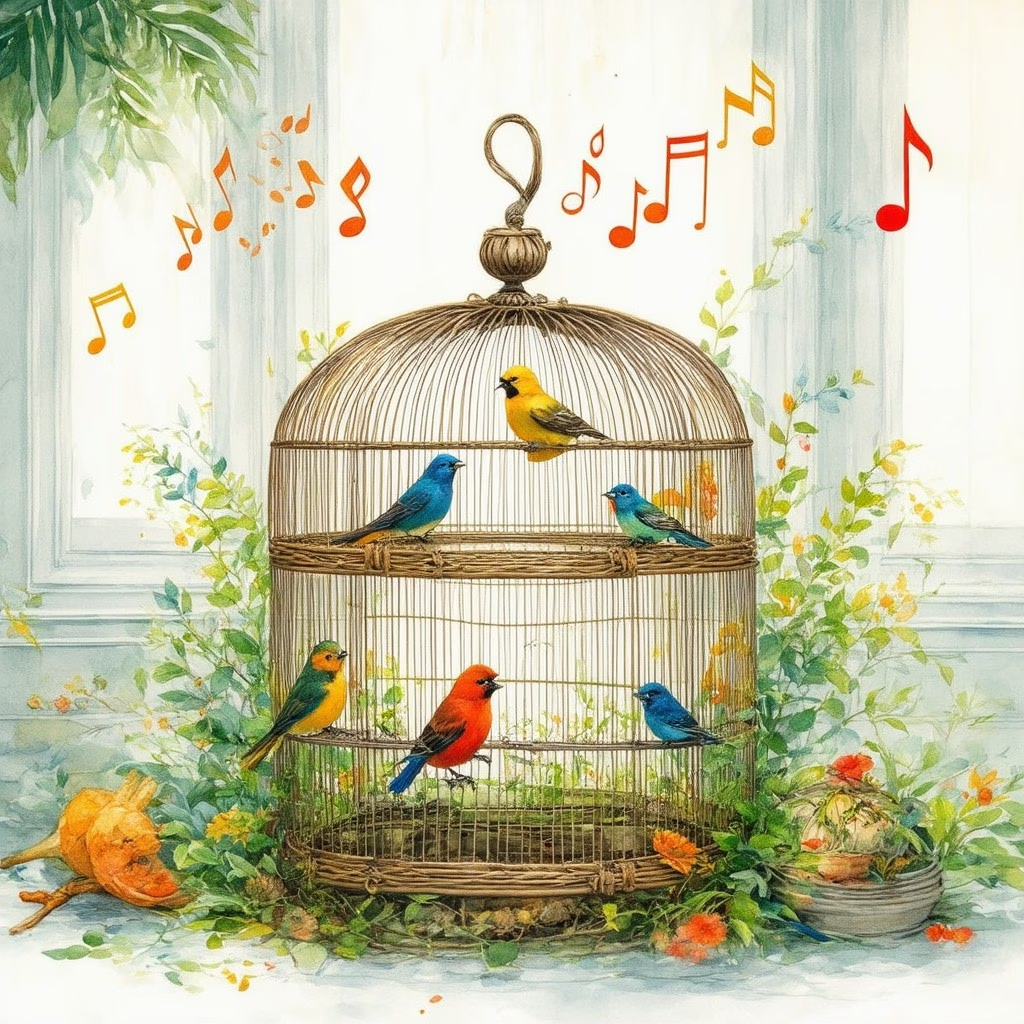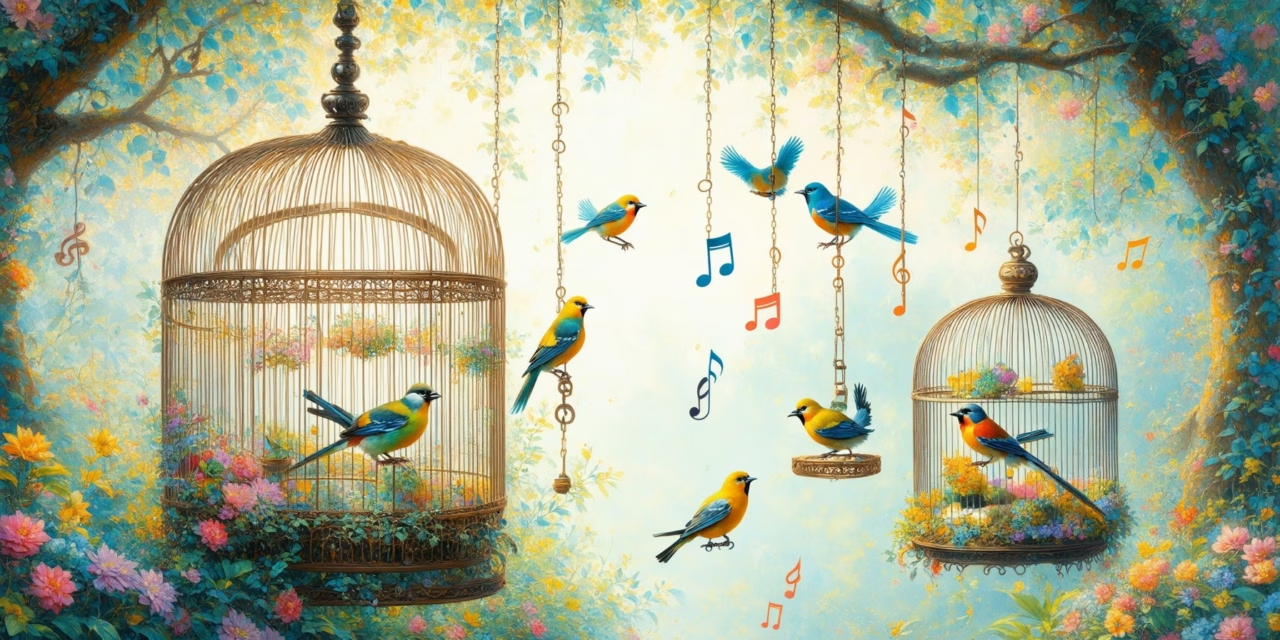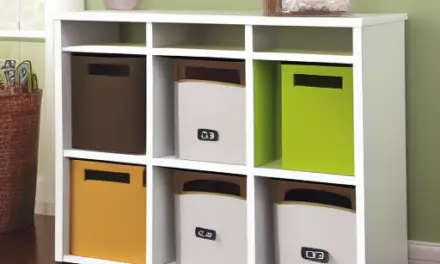Key Takeaways
- Choosing bird cages for sale requires understanding your bird’s species-specific needs for width and height to promote their natural flying behaviors.
- Wider cages are generally preferred, as they allow for horizontal flight, crucial for the physical and mental well-being of birds like canaries and finches.
- Covering a bird’s cage at night can enhance their sense of security, improve sleep quality, and regulate temperature, contributing to overall health.
- Proper cage bottom materials, such as paper liners or aspen shavings, ensure cleanliness and prevent respiratory issues for your bird.
- Regular maintenance, including daily cleaning and environmental enrichment, is essential for keeping your bird happy and healthy.
- Recognizing signs of unhappiness in caged birds, such as excessive vocalization or inactivity, is crucial for ensuring their emotional well-being.
- Explore various platforms like Amazon and Craigslist for a wide selection of bird cages for sale that fit your needs.
Choosing the right bird cages for sale can significantly impact your feathered friend’s happiness and well-being. With a variety of options available, including bird cages on Amazon and local listings like Craigslist, it’s essential to understand what makes a cage suitable for your bird. In this article, we will explore critical questions such as whether birds prefer tall or wide cages, the benefits of covering a bird’s cage at night, and what materials are best for the bottom of their habitat. Additionally, we will discuss signs of unhappiness in caged birds and how to enhance their living environment. By the end of this guide, you will be equipped with the knowledge to select the perfect cage for birds that meets their needs and ensures their comfort. Let’s dive into the world of bird cages and discover how to create a joyful space for your avian companions.
Do Birds Prefer Tall or Wide Cages?
Understanding Bird Preferences: Tall vs. Wide Cages
When considering the optimal cage size for birds, it is essential to prioritize width over height. A wider cage allows birds to engage in natural flying behaviors, which is crucial for their physical and mental well-being.
1. **General Guidelines**:
– For most small birds, including canaries and finches, a cage that is wider than it is tall is recommended. This design facilitates horizontal flight, enabling birds to flutter from perch to perch comfortably.
– The minimum width for a canary cage should be at least 24 inches, allowing ample space for flying back and forth.
2. **Species-Specific Needs**:
– **Canaries**: These birds thrive in environments where they can fly freely. A cage with a width of 30 inches or more is ideal for promoting their natural behaviors.
– **Finches**: Similar to canaries, finches require spacious cages. A width of at least 36 inches is recommended to accommodate their active flying habits.
3. **Cage Features**:
– Ensure the cage includes multiple perches at varying heights and widths to encourage exercise and exploration.
– Incorporate toys and enrichment items that stimulate mental engagement, as this contributes to overall well-being.
4. **Research Insights**:
– Studies have shown that birds housed in wider cages exhibit less stress and more natural behaviors compared to those in taller, narrower cages (Source: Journal of Avian Medicine and Surgery).
– The American Bird Conservancy emphasizes the importance of providing adequate space for flight, which is vital for the health of pet birds.
In conclusion, when selecting a cage for birds, prioritize a wider design to promote their natural flying instincts and overall health. This approach not only enhances their quality of life but also aligns with best practices recommended by avian experts.
Factors Influencing Cage Size Selection
Several factors influence the selection of cage size for birds, ensuring their comfort and well-being.
1. **Bird Species**: Different species have varying space requirements. Larger birds, such as parrots, need spacious environments to accommodate their size and activity levels. A large bird cage should be at least 36 inches wide to allow for adequate movement.
2. **Activity Level**: Birds that are more active, like budgerigars and cockatiels, benefit from wider cages that allow for flight. A big cage for birds encourages exercise, which is essential for their health.
3. **Social Interaction**: If you have multiple birds, consider a larger cage to provide enough space for social interactions without overcrowding. This is particularly important for species that thrive in flocks.
4. **Cage Placement**: The location of the cage can also affect its size. Ensure that the cage is placed in a safe, well-lit area where birds can feel secure while having enough room to move around.
By understanding these factors, you can make informed decisions when purchasing bird cages for sale, ensuring that your feathered friends have a comfortable and enriching environment. For a variety of options, explore bird cages for sale on platforms like Amazon or check local listings for bird cages for sale nearby.

Should You Cover a Bird’s Cage at Night?
Covering a bird’s cage at night can be beneficial, but it largely depends on the individual bird’s needs and environment. Here are key considerations:
- Bird’s Personality: Different species and individual birds have varying temperaments. Sensitive birds, such as finches and some parrots, may feel more secure with a covered cage, while others may prefer an open environment. Observing your bird’s behavior can guide your decision.
- Night Frights: Smaller birds like budgies and cockatiels are particularly prone to night frights, which can be triggered by sudden noises or movements. Covering the cage can provide a sense of safety and reduce these disturbances, allowing for uninterrupted sleep.
- Light and Noise Control: Birds require a dark and quiet environment to sleep effectively. If the room is too bright or noisy, covering the cage can help create a more conducive sleeping atmosphere. This aligns with findings from avian behavior studies that emphasize the importance of a calm environment for sleep.
- Respiratory Health: When covering the cage, ensure there is adequate ventilation to prevent respiratory issues. A fully covered cage can trap heat and moisture, leading to health problems. According to the American Veterinary Medical Association, proper airflow is crucial for avian health.
- Hormonal Regulation: Covering the cage can help regulate light exposure, which is particularly important during breeding seasons or if the bird is experiencing hormonal fluctuations. Research indicates that consistent light cycles can influence breeding behaviors and overall well-being.
- Partial Coverage: Instead of fully covering the cage, consider partially covering it by draping a cloth over the back and sides while leaving the front open. This allows the bird to feel secure while still being aware of its surroundings.
- Night Light Options: If complete darkness is a concern, a dim night light can be used to provide minimal illumination without disturbing the bird’s sleep cycle. This method can help ease anxiety for birds that may be startled by complete darkness.
- Gradual Introduction: If you decide to cover the cage, introduce the covering gradually. This helps the bird acclimate to the change without causing stress. Start by covering the cage for short periods and gradually increase the duration as the bird becomes more comfortable.
In conclusion, whether or not to cover a bird’s cage at night depends on the specific needs of your bird, its environment, and your observations of its behavior. Always prioritize the comfort and health of your pet by considering these factors.
Benefits of Covering a Bird’s Cage
Covering a bird’s cage at night can provide several benefits that enhance your bird’s overall well-being:
- Security: A covered cage can create a safe haven for your bird, reducing stress and anxiety during the night.
- Improved Sleep Quality: By minimizing disturbances from light and noise, covering the cage can lead to better sleep quality, which is essential for your bird’s health.
- Temperature Regulation: A cover can help maintain a stable temperature within the cage, protecting your bird from drafts and sudden temperature changes.
- Behavioral Benefits: Birds that feel secure are less likely to exhibit stress-related behaviors, leading to a happier and healthier pet.
How to Properly Cover a Bird’s Cage
To ensure that covering your bird’s cage is effective and safe, follow these guidelines:
- Choose the Right Material: Use a breathable fabric that allows for airflow while providing darkness. Avoid materials that can trap heat.
- Ensure Ventilation: Make sure the cover does not completely seal the cage. Adequate ventilation is crucial for your bird’s respiratory health.
- Monitor Temperature: Check the temperature inside the cage after covering it to ensure it remains comfortable for your bird.
- Observe Your Bird: Pay attention to how your bird reacts to being covered. If it seems distressed, consider adjusting your approach.
What is Best to Put in the Bottom of a Bird Cage?
When considering what to put at the bottom of a bird cage, it’s essential to prioritize both the health of your bird and ease of maintenance. Here are the best options:
- Cage Liners:
- Paper: Unprinted newspaper or paper towels are excellent choices as they are easy to clean and replace. They also allow for easy monitoring of droppings, which can indicate your bird’s health.
- Commercial Cage Liners: These are specifically designed for bird cages and often come with absorbent properties and odor control.
- Bedding Material:
- Aspen Shavings: These are safe, absorbent, and provide a comfortable surface for your bird. They are preferable to cedar or pine shavings, which can release harmful oils and cause respiratory issues.
- Corn Cob Bedding: This is another safe option, but it should be used with caution as it can mold if it becomes wet.
- Additional Considerations:
- Avoid using sandpaper or any abrasive materials that can harm your bird’s feet.
- Regularly change the bedding or liners to maintain a clean environment and prevent the growth of bacteria.
For more information on bird care and wellness, consider consulting resources from avian veterinarians or reputable bird care organizations. Regular maintenance and the right materials can significantly enhance your bird’s quality of life.
Cleaning and Maintenance Tips for Cage Bottoms
Maintaining a clean bottom of your bird’s cage is crucial for their health and happiness. Here are some effective cleaning and maintenance tips:
- Daily Spot Cleaning: Remove any droppings and uneaten food daily. This helps prevent odors and keeps your bird’s environment hygienic.
- Weekly Deep Cleaning: Once a week, remove all bedding and liners, and wash the bottom of the cage with a bird-safe disinfectant. Rinse thoroughly to ensure no residue remains.
- Inspect for Damage: Regularly check the cage for any signs of wear or damage. A damaged cage can pose safety risks to your bird.
- Replace Liners Regularly: Depending on your bird’s habits, you may need to replace liners or bedding more frequently. Keeping a clean bottom will help maintain your bird’s health.
By following these cleaning and maintenance tips, you can ensure a safe and comfortable environment for your feathered friend. For more options on bird cages for sale, explore various affordable options that suit your needs.
Do Birds Like When You Cover Their Cage?
Covering a bird’s cage can significantly impact its comfort and well-being. Many birds, particularly those that are prey animals, feel more secure when their environment mimics the natural conditions they would experience in the wild. Here are some key points to consider:
- Sense of Security: In the wild, birds often seek shelter under thick canopies to avoid predators. Covering their cage at night can replicate this environment, providing a sense of safety and reducing stress.
- Sleep Quality: Darkness is essential for many bird species to sleep well. Covering the cage can help create a dark, quiet space that promotes restful sleep, which is crucial for their overall health. Research indicates that adequate sleep contributes to better mood and behavior in birds.
- Temperature Regulation: A covered cage can help maintain a stable temperature, protecting birds from drafts and sudden temperature changes, which can be harmful to their health.
- Behavioral Benefits: Birds may exhibit less anxiety and more natural behaviors when they feel secure. A covered cage can reduce the likelihood of stress-related behaviors, such as excessive vocalization or feather plucking.
- Gradual Acclimatization: If a bird is not used to being covered, it’s important to introduce this change gradually. Start by covering only part of the cage and slowly increase the coverage as the bird becomes more comfortable.
In conclusion, covering a bird’s cage can enhance its sense of security, improve sleep quality, and contribute to overall well-being. Always observe your bird’s reactions and adjust accordingly to ensure it feels safe and comfortable in its environment.
Creating a Comfortable Environment for Your Bird
To create a comfortable environment for your bird, consider the following tips:
- Choose the Right Cover: Use breathable materials that allow for some airflow while blocking out light. This helps maintain a comfortable temperature and prevents overheating.
- Establish a Routine: Birds thrive on routine. Cover the cage at the same time each night and uncover it in the morning to help your bird adjust to the schedule.
- Monitor Reactions: Pay attention to how your bird responds to being covered. If it seems anxious or distressed, consider adjusting the covering method or duration.
- Provide Enrichment: Ensure your bird has plenty of toys and activities to engage with during the day. A stimulating environment can help reduce stress and promote happiness.
By implementing these strategies, you can enhance your bird’s comfort and well-being, making it a happier companion.

Are Birds Unhappy in Cages?
Caged birds often experience significant distress due to their confinement, which can lead to a range of psychological and physical issues. Understanding the signs of unhappiness in caged birds is crucial for any bird owner. Here are key points to consider regarding the well-being of caged birds:
- Natural Behavior: Birds are inherently social creatures that thrive in flocks. In captivity, they are often isolated, leading to loneliness and stress. Research indicates that social interaction is crucial for their mental health (Harrison, 1993).
- Boredom and Mental Health: Caged birds frequently suffer from boredom, which can manifest in harmful behaviors such as feather plucking and aggression. A study published in the Journal of Applied Animal Welfare Science highlights that environmental enrichment is essential to mitigate these issues (Mason et al., 2007).
- Physical Health Risks: Prolonged confinement can lead to obesity and other health problems due to lack of exercise. Birds require space to fly and engage in natural behaviors to maintain their physical health (Fitzgerald, 2015).
- Companionship Needs: Many bird species are known to form strong bonds with their companions. Without adequate social interaction, they may exhibit signs of depression and anxiety. Providing companionship, whether through other birds or human interaction, is vital for their emotional well-being (Bennett, 1998).
- Ethical Considerations: The ethical implications of keeping birds in cages are significant. Animal welfare organizations, such as PETA, advocate for the adoption of birds into environments that allow for natural behaviors and socialization, emphasizing that captivity should not compromise their quality of life.
Signs of Unhappiness in Caged Birds
Recognizing the signs of unhappiness in your bird is essential for ensuring their well-being. Common indicators include:
- Excessive vocalization or silence
- Feather plucking or self-mutilation
- Aggressive behavior towards other birds or humans
- Loss of appetite or changes in eating habits
- Inactivity or lethargy
Ways to Enhance Your Bird’s Well-being
Improving the quality of life for your caged bird involves several strategies:
- Environmental Enrichment: Provide toys, perches, and activities that stimulate your bird mentally and physically. Consider rotating toys regularly to maintain their interest.
- Social Interaction: Spend quality time with your bird daily. If possible, consider getting a companion bird to fulfill their social needs.
- Spacious Housing: Invest in a large bird cage that allows for movement and exercise. Look for bird cages for sale that offer ample space and features suitable for your bird’s species.
- Regular Veterinary Care: Schedule routine check-ups with an avian veterinarian to monitor your bird’s health and address any concerns promptly.
What is the best type of bird cage?
When selecting the best type of bird cage, several key factors should be considered to ensure the health and happiness of your avian companion. The right cage can significantly impact your bird’s quality of life, making it essential to choose wisely.
Types of Bird Cages: Finding the Right Fit
Bird cages come in various styles and sizes, catering to different species and needs. Here are some popular types:
- Flight Cages: Ideal for larger birds, flight cages provide ample space for flying and exercising. They often feature multiple levels and perches.
- Parrot Cages: Specifically designed for parrots, these cages are typically larger and sturdier, accommodating their playful nature.
- Small Bird Cages: Suitable for finches and canaries, these cages are compact but should still allow for movement and enrichment.
- Travel Cages: Lightweight and portable, travel cages are perfect for short trips or vet visits.
When considering bird cages for sale, look for options that fit your bird’s size and activity level. For example, a large bird cage is essential for bigger species, while smaller cages can suffice for tiny birds.
Features to Look for in a Quality Bird Cage
Choosing a cage involves more than just size; several features enhance your bird’s living environment:
- Material: Stainless steel is the safest and most durable option, minimizing the risk of harmful chemicals.
- Bar Spacing: Proper spacing is crucial to prevent escapes and injuries. Smaller birds need ½ inch spacing, while larger birds require ¾ inch to 1 inch.
- Design: Look for cages with horizontal bars for climbing, multiple perches, and toys to promote enrichment.
- Accessibility: Cages should have wide doors and secure latches for easy feeding and cleaning.
- Ventilation: Adequate airflow is essential to prevent respiratory issues.
- Safety: Ensure there are no sharp edges or toxic materials.
Investing in a high-quality cage, particularly one made from stainless steel, can significantly enhance your bird’s quality of life. For more detailed guidance on avian care, the National Bird Show provides resources that can help you make informed decisions about your bird’s habitat.
Exploring Bird Cages for Sale
When searching for bird cages for sale, it’s essential to consider various options that cater to different needs and preferences. Whether you are looking for a large bird cage or a compact model, understanding where to find the best selections can enhance your bird-keeping experience. In this section, we will explore the availability of bird cages, focusing on regions like California and Texas, as well as online platforms.
Bird Cages for Sale Near California and Texas
In California and Texas, there are numerous retailers and online platforms offering a wide range of bird cages for sale. Local pet stores often carry a selection of cages for birds, including options suitable for parrots and other larger species. Additionally, you can find bird cages for sale nearby through platforms like Craigslist, where listings for bird cages for sale on Craigslist frequently appear. This can be a great way to find affordable options, including used bird cages for sale.
For those who prefer shopping online, websites like Amazon offer an extensive selection of bird cages on Amazon, including parrot cages and large bird cages for sale. You can easily compare prices and read customer reviews to ensure you are making an informed decision. Other online retailers such as Chewy and PetSmart also provide a variety of options, making it convenient to find the perfect bird cage for sale.
Where to Find Used Bird Cages for Sale and Online Options
Finding used bird cages for sale can be a cost-effective solution for bird owners. Websites like Craigslist often have listings for bird cages for sale on Craigslist, where you can negotiate prices directly with sellers. Additionally, local community groups on social media platforms may have members selling their bird cages, providing another avenue to explore.
For those who prefer online shopping, platforms such as Amazon feature a variety of bird cages for sale on Amazon, including both new and used options. You can filter your search to find cheap bird cages for sale or specific types like parrot cages on Amazon. This flexibility allows you to find a cage that fits your budget and your bird’s needs.
In summary, whether you are looking for bird cages for sale near California or exploring online options, there are plenty of resources available to help you find the right cage for your feathered friend. Always consider the size and type of bird you have when selecting a cage to ensure their comfort and well-being.












